Have you ever hauled a half-empty trailer just because the design couldn’t handle your full load?
I have.
Back when I started, I bought a trailer that “looked right.”
But it wasn’t built for dirt work. The sides were too low. The axles weren’t strong enough. I was loading in small batches and wasting fuel, time, and labor.
That mistake slowed my crew down.
Since then, I’ve tested different dump trailers, learned how to read specs that matter, and helped buyers like you choose better.
This guide will give you simple answers. You’ll learn which trailer size fits your material. Which features to skip. And how to match the trailer to your needs.
So let’s start!
1. Start with Your Job Type and Material Needs
Before you buy a dump trailer, stop and ask yourself one thing: What exactly are you hauling?
That might sound simple. But I’ve seen a lot of people skip this step. And that’s where problems begin.
Years ago, I worked with a contractor who bought a dump trailer meant for light landscaping. He used it to haul broken concrete. After a month, the floor had deep dents. The axles were strained. And he had to buy a new trailer—twice the price, double the headache.
So here’s my advice: start with your job, not the trailer.
Identify Your Industry Use Case
Each job site is different. What works for a farm might fail at a quarry. Here’s a breakdown to help you figure out where you stand:
- Construction: You’re moving gravel, broken concrete, or debris. You’ll need a trailer with strong axles, solid floors, and enough ground clearance to handle rough sites.
- Mining: Your loads are heavier rock, ore, maybe long travel to remote sites. Think heavy-duty frame and high payload.
- Agriculture: Wet soil, livestock feed, or produce. These loads can be moist, soft, or fragile. Make sure the bed doesn’t trap sticky materials and that the sides are high enough to avoid spillage.
- Logistics: If you’re running materials between sites, you want something that’s easy to load and unload. Side doors or ramps can help.
- Manufacturing: You’re hauling scrap, bulk material, or parts. Payload consistency is key.
- Oil & Energy: Rough terrain, long hauls, and bulky items like pipes or tools. Durability matters more than appearance.
- Individual Buyers: Maybe you’re doing farm work, landscaping, or weekend hauling. A mid-size trailer with flexibility goes a long way.
If you’re honest about your work type, you’ll avoid overbuying or worse, underbuying.
Know Your Load Material and Behavior
It’s not just what you haul, but how it behaves. Some materials slide right out. Others cling to the bed like wet clay.
Ask yourself:
- Is your material sticky or loose?
- Wet soil and mulch can clog the trailer bed.
- Dry gravel or sand pours out clean.
- How much moisture is in your load?
- Wet gravel is heavier than it looks.
- Dry materials flow faster and are easier on hydraulics.
- Is your load fragile?
- Produce needs gentler handling than scrap steel.
- Soft goods may require lined trailers or slower dump speeds.
- What about density and flow angle?
- Heavy, compact loads (like ore) need stronger lifting power.
- Loose material (like wood chips) needs taller sides to prevent overflow.
A good dump trailer isn’t just strong. It’s right for your material.
Once you figure that out, you’re halfway there.
2. Choose the Right Dump Style
The first time I saw a side dump trailer in action, I was on a mining site in rough terrain. A standard rear dump had gotten stuck trying to unload on a slope. It nearly tipped. But the side dump? Clean unload. No drama.
That’s when it hit me dump style matters more than most people think.
If you choose the wrong dump type, you risk more than lost time. You risk your safety, your crew’s safety, and your trailer’s lifespan.
Let’s break it down so you can choose the right one.
Rear Dump vs Side Dump vs End Dump
Here’s a simple breakdown to help you choose the right style for your work:
- Rear Dump
- Most common style
- Best for construction, landscaping, and general-purpose use
- Dumps straight back easy for tight spots but needs clear space behind
- Side Dump
- Dumps to the left or right side
- Better for uneven ground or windy conditions
- Less chance of tipping, more stable during the lift
- End Dump (often taller trailers)
- Lifts from the front, dumps out the rear
- Works well for heavy, compact materials
- Needs more overhead space but fits better in narrow spots
I once helped a farm crew unload feed using an end dump. It was tight, but we had no other choice. The rear space was blocked, and side dumping would have made a mess. In that case, the end dump saved the day.
Key Factors to Consider
Before you choose, think about where and how you’ll dump your load. These details make all the difference:
- Stability while dumping
- Side dumps handle uneven ground better
- Rear dumps can be risky on slopes
- Clearance height
- End dumps need vertical space
- Rear and side dumps lift lower
- Loading and unloading space
- Rear dump: clear back path
- Side dump: space on either side
- End dump: enough height but less side clearance
- Safety of the mechanism
- Hydraulics should be strong, but not jerky
- Check for clean lift and smooth release
Each dump style has pros and cons. But if you match the trailer to your job site, you’ll work faster, safer, and with fewer surprises.
And you won’t have to worry about your trailer shifting under pressure like I did.
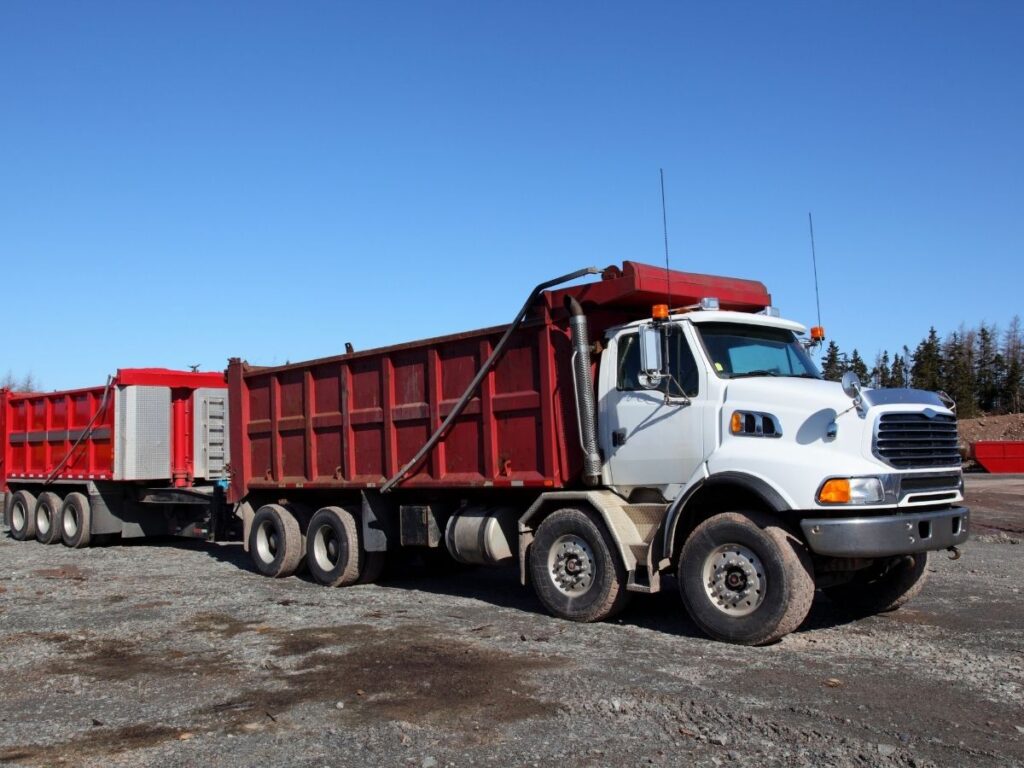
3. Match the Size, Volume, and Payload to Your Job
Choosing the right dump trailer isn’t just about picking something that “fits.” It’s about finding the right size, weight capacity, and bed design that matches your actual workload.
Here are some things to look at before you decide:
Choose Trailer Size Based on Daily Workload
Start by asking: How much do I haul on a typical day? Not your biggest day. Not your slowest. Just your usual, day-in, day-out load.
Now think about your trailer bed. A few numbers make all the difference:
- Bed Length and Width
- Most dump trailers run 10 to 14 feet long
- Widths vary from 6 to 8 feet
- Smaller beds are easier to tow and store
- Larger beds handle more volume—but may need stronger trucks
- Side Height
- Lower sides (18–24 inches) work better for loading with a skid steer
- Higher sides (up to 48 inches) keep loose or bulky material in place
- For lightweight materials like mulch, higher sides help prevent spillage
- Volume Capacity
- A trailer’s volume is usually measured in cubic yards
- A 7×14 bed with 24-inch sides holds about 7–8 yards
- But don’t focus only on space weight matters too
I once used a trailer that had plenty of volume, but when we filled it with wet gravel, we ended up over the weight limit. That mistake cost us a busted tire and a long delay.
Understand Payload Rating (GVWR)
GVWR means Gross Vehicle Weight Rating. It’s the maximum total weight your trailer can handle, including its own frame plus the cargo inside.
Here’s what to watch:
- Know your trailer’s empty weight (this is listed by the manufacturer)
- Add the weight of your typical load
- Make sure the total stays under the GVWR
Why it matters:
- Overloading can bend axles, blow tires, and wear out your truck
- It’s also illegal in many places and can lead to steep fines
- Even worse, it’s unsafe. Brake systems and hitches are built for limits
Also check your local road rules. Some areas have load caps on bridges, rural roads, or city streets.
Bottom line match your trailer to the job, not the other way around. A properly sized trailer works better, lasts longer, and keeps your workday running smooth.
4. Pick the Right Frame, Build, and Axles
A dump trailer is more than just a metal box that tips. The frame and axles underneath it carry the real load.
If you get these wrong, the trailer might still look good but it won’t last. Or worse, it won’t be safe.
Here are some key things to check before making your choice:
Frame Type Matters
The frame is the backbone of the trailer. It handles stress, weight, and twisting on uneven ground. Different frame types are built for different jobs.
Here are the common options:
- I-Beam Frames
- Strong and rigid
- Good for heavy-duty work
- Resists flex under full load
- Channel Frames
- Lighter than I-beam
- Fine for smaller jobs and lower weights
- Easier to maintain but not as strong
- Tubular Frames
- Fully enclosed steel
- Great for strength but harder to inspect for rust
- Often used in mid-range trailers
Then there’s the material itself:
- Steel frames are stronger. They’re best for construction, mining, or any work that’s rough on gear.
- Aluminum frames are lighter and resist rust, but they don’t handle heavy impacts as well.
Steel is what I’ve used most in rough environments. It adds weight, yes but it also adds years of use.
Axle Configuration
The axles carry everything. Trailer weight, material weight, and road shock. That’s why getting the right axle setup is key.
Here’s what to know:
- Single Axle
- Lighter loads
- Easier to tow and back up
- Lower cost, but less capacity
- Tandem Axle (2 axles)
- Most common setup for medium to heavy loads
- Better stability and weight spread
- Triple Axle
- Built for extreme loads
- Often used in industrial or large-scale hauling
Axle spacing matters too:
- Close axles offer tight control
- Spread axles help balance weight over longer trailers
Don’t forget the braking system. Your trailer’s brakes should match the axle setup. Electric or hydraulic both need to be strong enough for full load stops.
And finally suspension:
- Leaf springs are standard. Affordable and reliable.
- Air ride gives a smoother ride but costs more. Great for fragile cargo or long hauls.
Choosing the right frame and axle setup keeps your trailer working hard and keeps you safe on the road. Get this part right, and the rest of the trailer will follow.
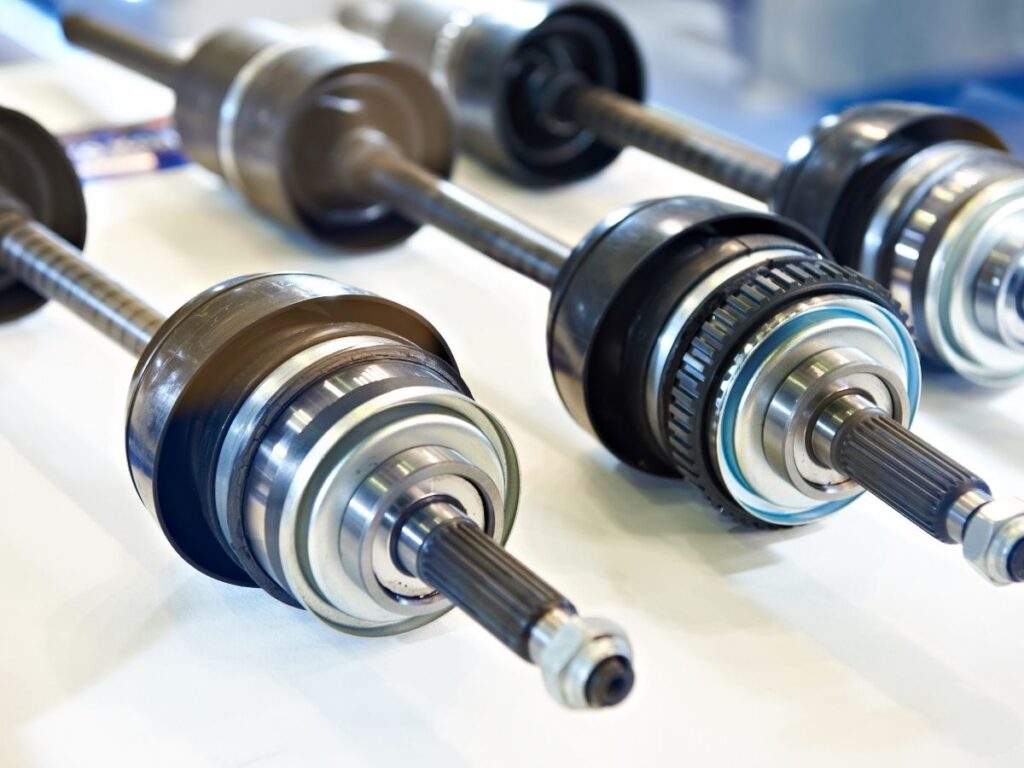
5. Look at Hoist System and Dumping Mechanism
The hoist is what lifts your load. It’s the power behind the dump. And it’s easy to overlook—until it stops working the way you need it to.
Some trailers lift fast but can’t handle much weight. Others dump high but take longer. The right system depends on what you’re hauling, where you’re dumping, and how often you do it.
Here are some things to keep in mind:
Hoist Types
Not all dump trailers lift the same way. The hoist system controls how the bed rises and how stable it is under load.
Here are the three most common types:
- Scissor Lift
- Strongest and most stable
- Handles uneven loads better
- Good for construction and heavy-duty hauling
- Telescopic Cylinder
- Extends in sections
- Gives the highest dump angle great for sticky or wet loads
- Takes more vertical space to operate
- Dual Ram
- Two cylinders mounted under the bed
- Common in mid-size trailers
- Works fine for balanced loads but may wobble with heavier material
I’ve used all three over the years. For gravel and scrap, I always leaned on scissor lifts they felt safer and handled rougher jobs better. But for wet soil or mulch that doesn’t flow easily, telescopic gave us the cleanest unload.
Questions to Ask Yourself
Choosing a hoist system isn’t about what’s most popular it’s about what fits your work.
Here are a few things to ask before you decide:
- Do you need a fast dump cycle?
- If speed matters, look at how quickly the bed lifts and lowers
- Are you dumping on uneven ground?
- Go for stability scissor lifts or wide dual rams work better here
- Do you need high clearance?
- Telescopic cylinders lift higher, which helps sticky or dense loads flow out
Also think aboutmaintenance. More moving parts means more things that need checking. A well-maintained hoist can last years but only if it matches your workload.
The hoist system is the muscle of your trailer. If it’s too weak or too slow, your trailer becomes a burden instead of a tool. So take time here it’s worth it.
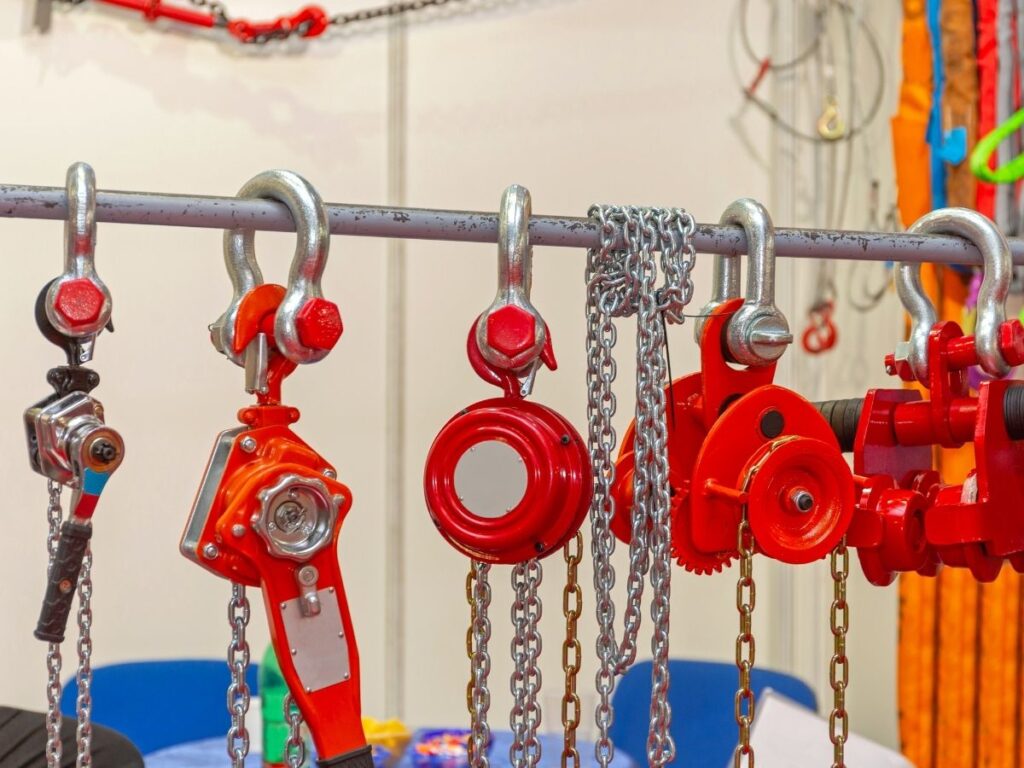
6. Consider Terrain, Road Use, and Travel Distance
Where you haul matters just as much as what you haul.
Some trailers are built for open highways. Others are made to crawl through job sites, farms, or rocky ground. If you don’t match your trailer to the terrain, you could end up stuck—or worse, with broken parts halfway through the job.
This section will help you think through where your trailer will spend most of its time.
Here are some key things to look at:
Match Tires, Ground Clearance, and Suspension to Terrain
Start by thinking about the terrain.
- Off-road: You’ll need high-clearance axles and tough tires. This matters in mining, oil fields, or farms with uneven ground. A low trailer drags, gets stuck, or takes damage.
- Highway use: Standard clearance is fine, but make sure your trailer is DOT compliant brakes, lights, reflectors, and tires all need to meet legal standards.
- Mixed use: If you go from road to field often, choose a trailer that can handle both. That usually means strong suspension and durable tires.
Also consider the suspension system:
- Leaf spring: Most common. Simple, durable, and affordable.
- Air ride: Smoother on rough roads, but costs more and may need extra maintenance.
If you haul fragile materials or run on bumpy roads often, the smoother ride may be worth it.
Daily Travel Distance and Fuel Efficiency
Travel distance changes everything. A trailer that looks right in the yard might feel heavy and slow after 100 miles on the highway. The longer you haul, the more every pound counts.
Here’s what to keep in mind:
- Heavier trailers burn more fuel
- Steel frames are stronger, but also add weight
- Tandem axles pull straighter and offer better balance over long drives
- They also distribute weight more evenly, which helps with tire wear and handling
A friend of mine hauls materials from a rural site to a city yard five days a week. He used to tow a single axle trailer. After switching to a tandem with better suspension, the fuel savings alone made up the price difference within a year.
If your trailer travels far and often, it needs to be built for the road, not just the load. Picking the right setup here saves time, fuel, and wear on your truck.
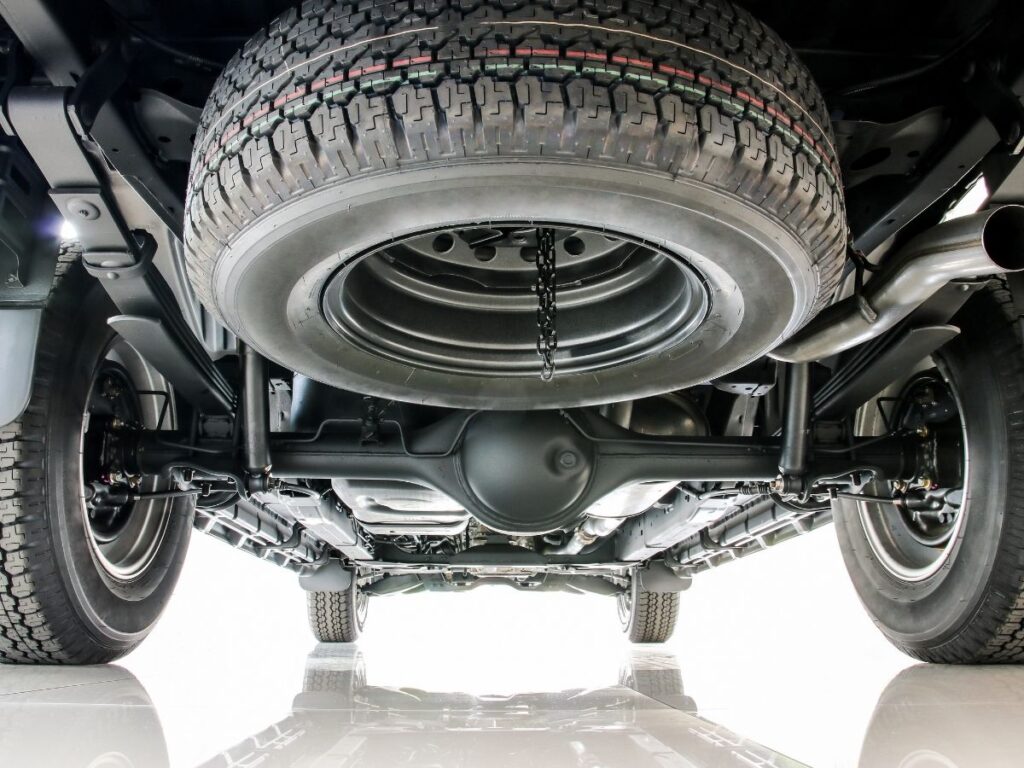
7. Decide on Materials and Coating
The material your dump trailer is made from affects more than just weight. It changes how it handles wear, weather, and time.
I’ve seen trailers rust out after just two winters on salted roads. And I’ve seen others last years hauling scrap on tough job sites. The difference? Material choice and coating.
Here are some key things to look at before you commit:
Steel vs Aluminum
The frame and bed are usually built from steel or aluminum. Each has pros and cons, depending on where and how you work.
- Steel
- Stronger
- Handles impact and heavy loads better
- Usually cheaper upfront
- Heavier, which means more fuel use
- Can rust if not properly coated
- Aluminum
- Lighter weight = easier towing and better fuel efficiency
- Resists rust better, especially in wet or salty environments
- Costs more upfront
- Not ideal for heavy construction or rough loading
If you’re working in coastal areas, farms, or anywhere with moisture or road salt, aluminum may save you in the long run. For heavy-duty work like mining or demolition, steel still holds up better under pressure.
Floor and Sidewall Thickness
This part often gets skipped. But it matters.
Thicker walls and floors protect the trailer from bending or wearing out too soon.
- For rough loads like gravel, concrete, or scrap go thicker
- For light materials like mulch or feed, you can go lighter
Look for reinforced flooring if you use machines to load, like skid steers or loaders. The added strength helps prevent long-term damage.
Protective Coatings and Finishes
A good trailer needs more than strong metal. It also needs the right coating to stand up to weather and wear.
Here’s what you’ll see most often:
- Powder Coating
- Applied as a dry powder and baked on
- Holds up better than standard paint
- Resists chipping, cracking, and rust
- Paint
- Cheaper, but may wear faster
- Needs more maintenance over time
- Galvanized Steel
- Great for wet or salty jobsites
- Adds a layer of rust resistance
- Costs more but pays off in durability
If your trailer sits outside or works through all seasons, don’t skip the coating. A good finish helps your investment last longer and keeps you from patching rust when you are hauling loads.
8. Look for Features That Improve Workflow
A good trailer should make your job smoother, not slower.
When you’re on a tight schedule, small features make a big difference. Saving five minutes here and ten minutes there can add up to real gains over a full workday.
Whether you’re hauling gravel, mulch, feed, or scrap, the right add-ons can make the job safer, cleaner, and faster.
Here are a few features worth paying attention to:
Tarp Systems
A tarp system might not seem important—until you lose half your load to wind or rain.
There are two main types:
- Manual tarps
- Crank-style, simple to use
- Takes more time, but costs less
- Electric tarps
- Roll out with the push of a button
- Great for jobs that need covering often
Both help you keep loads secure, especially loose or wet materials like gravel or soil. A tarp also protects the load from rain and stops debris from blowing out on the road.
I’ve had jobs where we didn’t cover the load. Wind scattered dirt across two lanes. Not only did we lose product, we had to clean it up.
Hydraulic Upgrades
Standard hydraulic systems get the job done. But upgrades can make dumping easier, faster, and safer.
Some trailers come with battery-powered hydraulic kits. These let you:
- Dump without the truck running
- Lift and lower more smoothly
- Reduce strain on your truck battery
If you’re dumping multiple loads in a day, this small change makes a big difference.
Also check for hydraulic power controls that let you control speed or angle. It helps when dealing with uneven loads or tricky spots.
Rear Gate Design
The way your gate opens affects how cleanly and safely your load dumps.
Common options:
- Barn Door Style
- Swings open
- Good for full loads and wide dumping
- Needs space behind the trailer
- Spreader Gate
- Opens from the bottom
- Best for spreading gravel or soil while moving
Many trailers now offer multi-position latches, so you can control how wide the gate opens.
That control helps keep dumps clean and consistent, especially on narrow job sites or when spreading material over a distance.
If your trailer has the right features, you spend less time fighting it and more time getting the job done.
9. Think Long-Term: Maintenance, Support, and Longevity
A dump trailer is a long-term investment. You want it to work hard—and keep working without constant repairs.
Some trailers look tough at first. But after a few months on the job, small issues start popping up. Loose wires. Leaky hydraulics. Worn-out bushings. And if the trailer isn’t easy to fix or service, those little problems turn into big delays.
Thinking long-term means asking the right questions before you buy. Here’s what to look at:
How Easy Is It to Maintain?
Some trailers are built with service in mind. Others aren’t.
Before you buy, check how easy it is to access key components:
- Grease Points
- Are they easy to reach?
- Fewer grease fittings might seem convenient, but they usually mean less protection for moving parts.
- Hydraulic Fluid Access
- Look for a tank that’s easy to refill and monitor
- Check if the cylinder hoses and fittings are exposed or protected
- Electrical System Layout
- Wires should be neatly routed and sealed from moisture
- A clean layout helps you fix problems fast and keeps the lights working through bad weather
I once helped a buddy troubleshoot a trailer with wires running every direction, no labels, no protection. It took us two hours to fix a broken brake light. That shouldn’t happen on a job site.
Replacement Parts Availability
No trailer is problem-free. Things wear down. Stuff breaks. So the real question is: how fast can you fix it?
Here’s what matters:
- Common Breakdown Parts
- Hydraulic hoses
- Tailgate latches
- Brake components
- Bearings and bushings
- Compatibility with Local Shops
- Can your mechanic service it?
- Do local parts dealers carry replacements?
Trailers that use standard parts are easier and cheaper to maintain. If everything has to be special-ordered, expect longer downtime.
It’s worth asking your dealer: If something breaks, how fast can I get parts?
In the long run, a trailer that’s easy to maintain and repair saves you money and keeps your crew moving. Choosing the right one upfront means fewer surprises down the road.
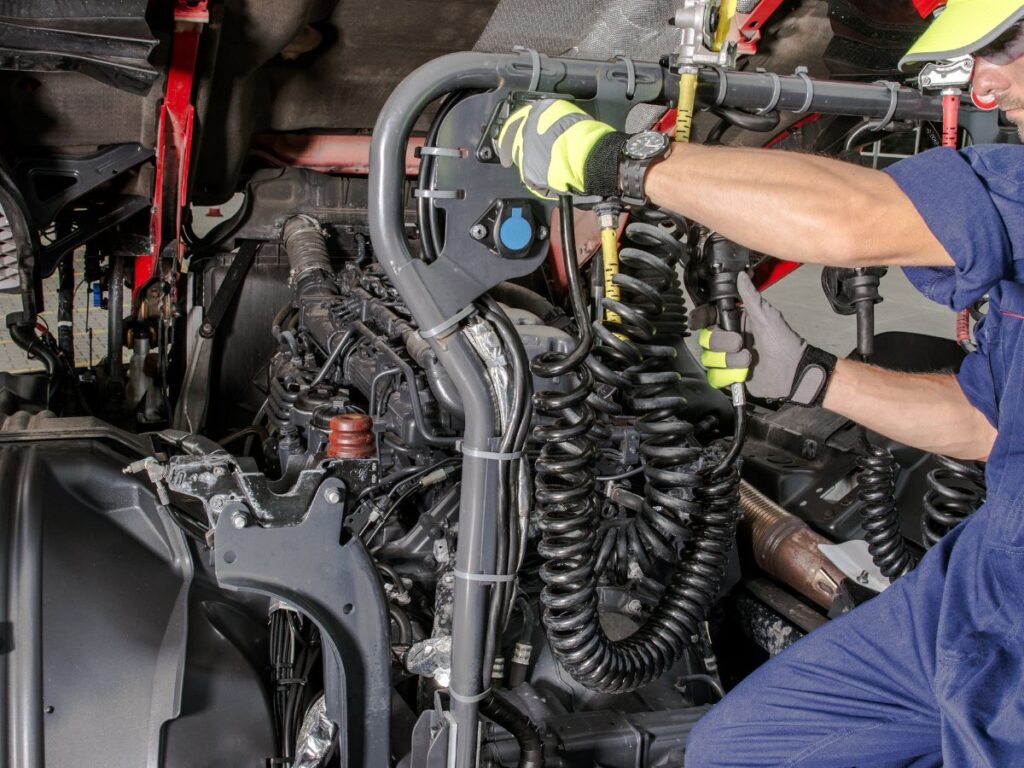
10. Compare Manufacturers and Dealer Support
Picking a trailer is only part of the job. The company behind it matters just as much.
A good manufacturer stands behind their product. A good dealer answers your call when something goes wrong.
You don’t want to find yourself stuck with a broken hoist and no one to call. I’ve seen trailers that looked fine on day one, but once they needed service, the dealer stopped answering. That kind of support (or lack of it) can cost you more than just time.
So before you make the final call, here are a few things to check:
Ask These Key Questions
Not all trailer brands are built for the same type of work. Some focus on light use. Others build for construction, mining, or agriculture.
Before you buy, ask:
- Do they have experience with your industry?
- A trailer for hauling livestock feed isn’t the same as one for concrete debris
- Look for a company that’s worked with buyers like you
- Do they offer custom configurations?
- Can you adjust side height, axle setup, or hoist type?
- If your work is specific, you may need features that don’t come standard
- What’s the warranty policy and how is after-sales service handled?
- Do they offer clear support for repairs, parts, or defects?
- Ask how long the warranty lasts and what it actually covers
Read Reviews or Ask for References
This step is simple, but powerful. Real feedback tells you what the brochure won’t.
- Look for long-term user reviews
- Not just “we bought one last week”
- Look for people who’ve owned the trailer for a year or more
- Check how they handle problems
- Fast response? Easy part replacement?
- Or silence once the deal is done?
- Ask the dealer for references
- Any serious seller should be willing to connect you with past buyers
- If they avoid the question, that’s a red flag
Good trailers are built with strong steel. Great ones like those from Rhinotrail come with real support behind them.
Don’t just look at specs. Look at who’s standing behind the machine. That can make all the difference when things go wrong.
11. Budget Smart: Price vs Performance
It’s easy to focus on the price tag when you’re buying a dump trailer. But cost and value are not the same thing.
The cheapest trailer might get the job done today but what about next year? Or after 500 loads? A low upfront price can lead to higher costs later on if the trailer breaks down, eats up fuel, or needs constant repairs.
Buying smart means looking at the full picture, not just the number on the invoice.
Think Beyond Purchase Price
The cost doesn’t stop once you drive the trailer off the lot. You’ve got to think about what it takes to keep it running every day.
Here’s what adds up over time:
- Operating Costs
- Heavier trailers burn more fuel
- Steel frames are strong but may add weight
- Aluminum may save fuel, depending on your load and distance
- Maintenance and Downtime
- A trailer with easy-access parts and good wiring will cost less to maintain
- Fewer breakdowns mean more time on the job and less time in the shop
- Fuel Use Over Time
- Lighter builds and tandem axles often tow smoother and straighter
- That saves fuel, especially on long hauls
A buddy of mine went for a cheaper model a few years back. Looked like a great deal. But the hydraulics were slow, the wiring kept shorting out, and he was constantly chasing small issues. In the end, he spent more on repairs than he saved on the price.
Watch for Hidden Costs
The base price isn’t always the final price. Some things don’t show up until after you’ve signed the papers.
Look out for:
- Licensing and registration fees (these vary by location)
- Tarp systems (manual or electric—often not included)
- Battery kits or hydraulic upgrades
- Spare tires or upgraded suspension
- Custom modifications (side extensions, toolboxes, upgraded axles)
Ask for a full breakdown before you buy. That way, you won’t be surprised by extras that drive up your total cost.
Buying a dump trailer is a serious move. Spending more up front for better build and support may actually save you more in the long run.
The goal isn’t to buy cheap it’s to buy once and buy right.
12. Final Checklist Before You Buy
By now, you’ve looked at frame types, axle setups, hoist systems, and more. But before you sign the paperwork or hit “buy now,” it helps to step back and run through a quick checklist.
This isn’t about overthinking it’s about making sure your trailer works today and five years from now.
Here are a few final things to confirm:
What to Confirm
Even the best trailer can be a bad fit if it’s not right for your work, your roads, or your storage space. Use this list to make sure everything lines up:
- Legal compliance
- Are you meeting local weight limits and road rules?
- Will you need any special permits or inspections?
- Load needs
- What are you hauling?
- How heavy is it?
- How often will you run loads?
- Site terrain and job length
- Are you working on paved roads, farms, construction sites, or rocky areas?
- Do you haul short distances or longer highway trips?
- Storage space
- Where will the trailer sit when not in use?
- Do you have space to back it in, keep it clean, and protect it from the weather?
I’ve seen buyers overlook storage, thinking only about use. But letting a trailer sit outside without protection can shorten its life fast especially if it’s made of steel and you’re in a wet area.
Bonus Tips for Individual Buyers
If you’re an independent driver, landowner, or small business owner, here are a few extra tips:
- Buy slightly bigger than your current need
- Loads grow over time. A little extra space now can save you an upgrade later.
- Look for used trailers with maintenance records
- A well-cared-for used trailer can give you years of reliable work—at a lower price
- Talk to other owners in your area
- Ask what brands and setups have worked best
- Learning from their experience can save you time and money
Buying a dump trailer isn’t just about the specs. It’s about knowing your work and choosing a tool that fits it.
Run through this list before you commit and you’ll walk away with a trailer that serves you well for the long haul.
Conclusion
You’ve walked through every step size, build, hoist, budget, and more.
This guide was built to make your choice easier, not harder.
That trailer I bought years ago? It taught me the hard way. You don’t have to learn like that.
Now’s the time to choose smart.
Pick a trailer that works as hard as you do. One that fits your load, your roads, your goals.
So are you ready to stop guessing and start hauling?
Let us help. Contact us today and get the trailer that’s right for your needs.


